Are you dreaming of the Norway fjords in winter? As far as winter destinations go, this postcard-perfect part of the Nordics boasts epic winter activities, charming villages and fascinating history. Here’s a travel guide with all you need to know about visiting the epic fjords in Norway in the winter months!
Snow-covered fir trees lined the dark road as we ploughed through the darkness, en route from Sogndal airport to Fjaerland, a small fjordside village some 40 minutes away.
The sun had set long before, but the moonlight bounced off the snow as our driver skilfully drove us over fjords and into the countryside.
The windows were brightly lit at the Fjaerland Fjordstove Hotel, a beacon in an otherwise silent landscape, and our host stood at the door.
“Welcome to the Norwegian fjords”, she said cheerfully, “you can’t see it right now, but here we’re right on the edge of one! Just wait until sunrise”.
I was on a trip visiting some of Norway’s fjords in winter; to experience some of their cooler-season activities and discern what the destination has to offer in the cooler months. Discover more about them in this blog post!
This blog post contains affiliate links. I visited as a guest of Widerøe Airlines and Visit Fjord Norway. All opinions are my own.
Are the Norwegian fjords in winter worth visiting?

“Let’s cut to the chase – you can’t live here if you don’t like snow” Jarle, the owner of Fjaerland Guiding, told us the next morning. “Our lives in winter are entirely snow-based.
The fjords look completely different from November to March – as you can see, they’re totally covered by thick white snow”.
Most Norwegian fjord destinations will be at least a little snowy throughout the winter months – except for Bergen, which sees snow sometimes, but more often has temperatures above freezing.

While the colder weather means that you’ll need to don a few extra layers, the bright white snow does nothing but enhance the landscape (and fjord tours run all winter round!), plus it brings a plethora of other attractions: skiing, snowshoeing and glacier chasing are always on the menu when visiting the Norway fjords in winter.
Kayaking or swimming in the fjords may seem less appealing during this season (although there are certainly people who still do both – the Norwegians are a hardy bunch), but the enticing snow-covered streets and cosy winter atmosphere are enough to draw even the most sceptical of travellers in.
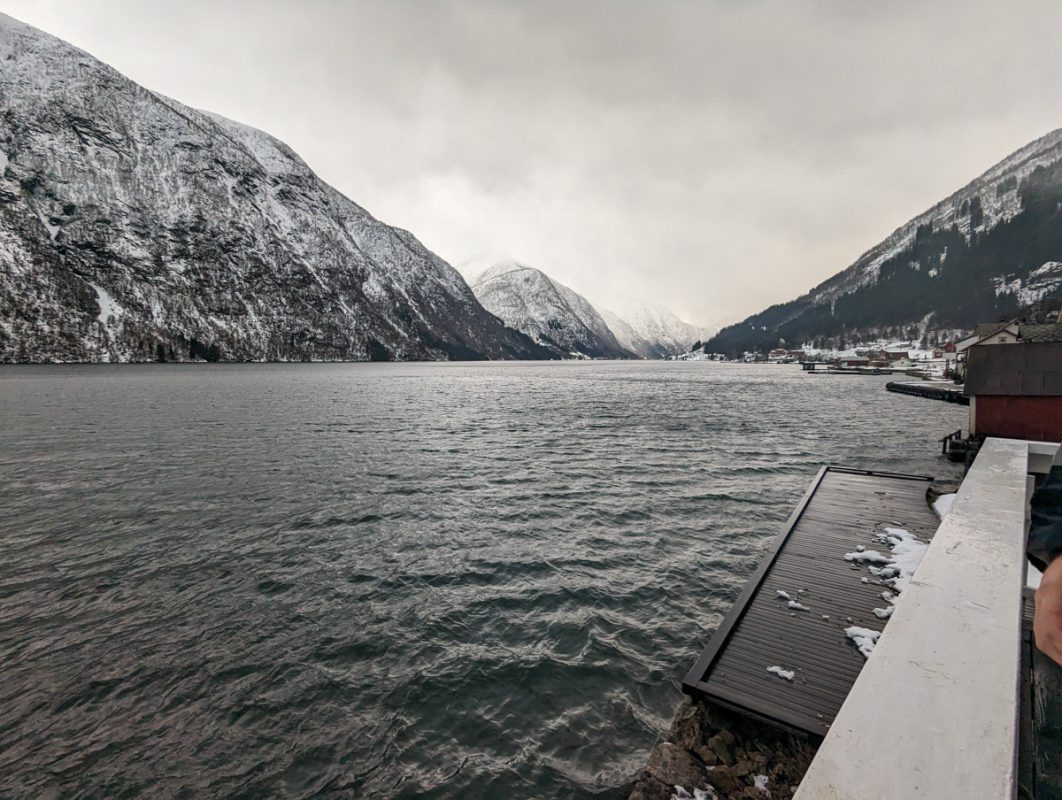
Norway’s fjords aren’t necessarily better in winter, but they’re different to the summer months, and anyone who’s a fan of wintery landscapes and snowy activities should mark it as a must-visit travel experience.
How to get to the Norwegian fjords in winter
We flew to the Norway fjords as a guest of Widerøe, a local airline that, using Bergen as its hub, connects 41 destinations in Norway (including many of its fjord towns and cities) with eight European destinations (including London and Aberdeen).
Widerøe connects Bergen to Sogndal by way of a small propellor plane; and uses a slightly larger vessel to carry passengers all the way up north, to Tromsø – the self-proclaimed “capital of the Arctic”.
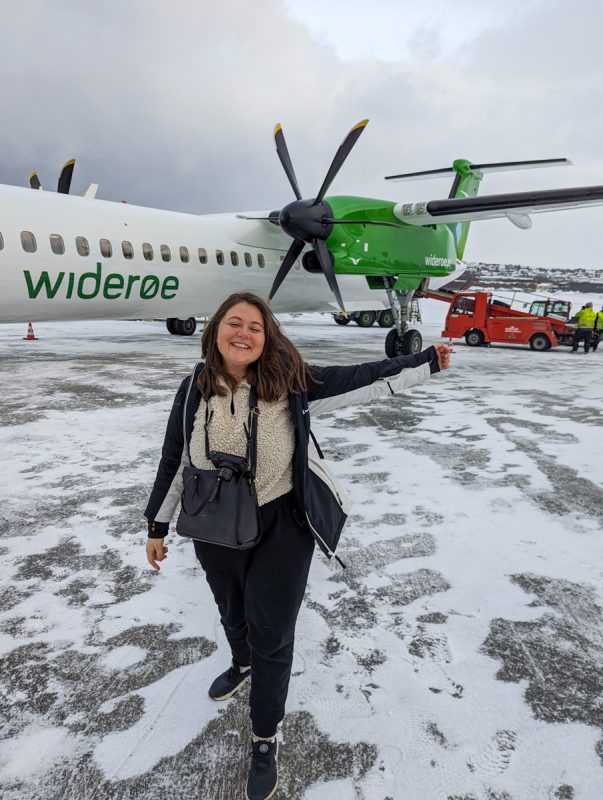
All of its planes are in a 2×2 configuration – ideal for people who are travelling as a couple or group of two or four – and the airline offers free tea and coffee for flights of over 40 minutes and free entertainment (which you’ll need to use a smartphone to view).
However, one of the main drawbacks to visiting the Norwegian fjords in winter is that there can be delays.
Our plane from Bergen to Sogndal was delayed for around an hour due to the weather – and, according to some of our fellow (local) plane takers, there was a chance that the plane would have been taken to Oslo if the weather didn’t permit us to land in Sogndal.
We had further delays when flying from Tromsø to Bergen; the plane was delayed three hours, causing us to miss our connection back to London and meaning that we had to spend another night in Bergen.
While this shouldn’t deter you from visiting fjord Norway in winter, from my experience I recommend keeping plans fairly flexible (you never know what the weather will do here!) and allowing an extra day in Bergen or Oslo before flying back to your home country.
Sogndal is the heart of the Norwegian fjords, and from here you can take public transport to places like Fjaerland and Flam.
Places to visit in fjord Norway in winter
You’ll find rocky cliffs tumbling into narrow bodies of water throughout the western part of Norway. Here are some of the best fjord destinations to visit throughout the cooler months:
Bergen
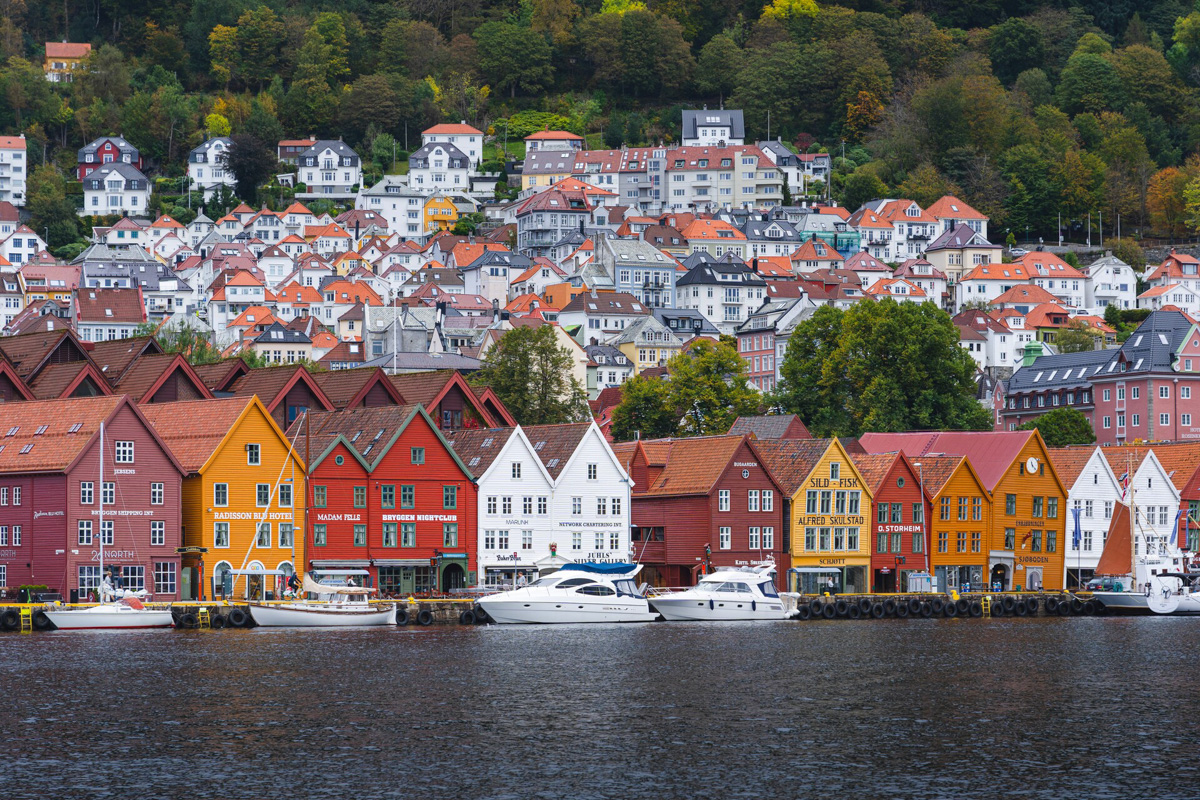
The second-largest city in Norway and the hub of its fjord country, Bergen offers the perfect mix between urban and rural.
The beautiful city is much more well-connected than other destinations on this list – making it most certainly the easiest place to visit in fjord Norway in winter – but its city charms don’t just stop at its connectivity.
Bergen’s nestled right in between fjords; you can explore one on foot as you walk around the UNESCO-listed Bryggen wharf, which was built by the Hanseatic League after the city was destroyed by fire time and time again. You’d think they would have stopped building from wood at one point!

The city’s home to art galleries and museums (the Bergen Maritime Museum explains its intrinsic link to the city and was a personal favourite of mine), and there are opportunities to try fresh seafood (which fjord Norway unsurprisingly excels in), summit up surrounding mountains or toast to a successful day exploring at an abundance of bars – Frescohallen, which boasts beautiful murals depicting Bergen’s maritime history, was my favourite.
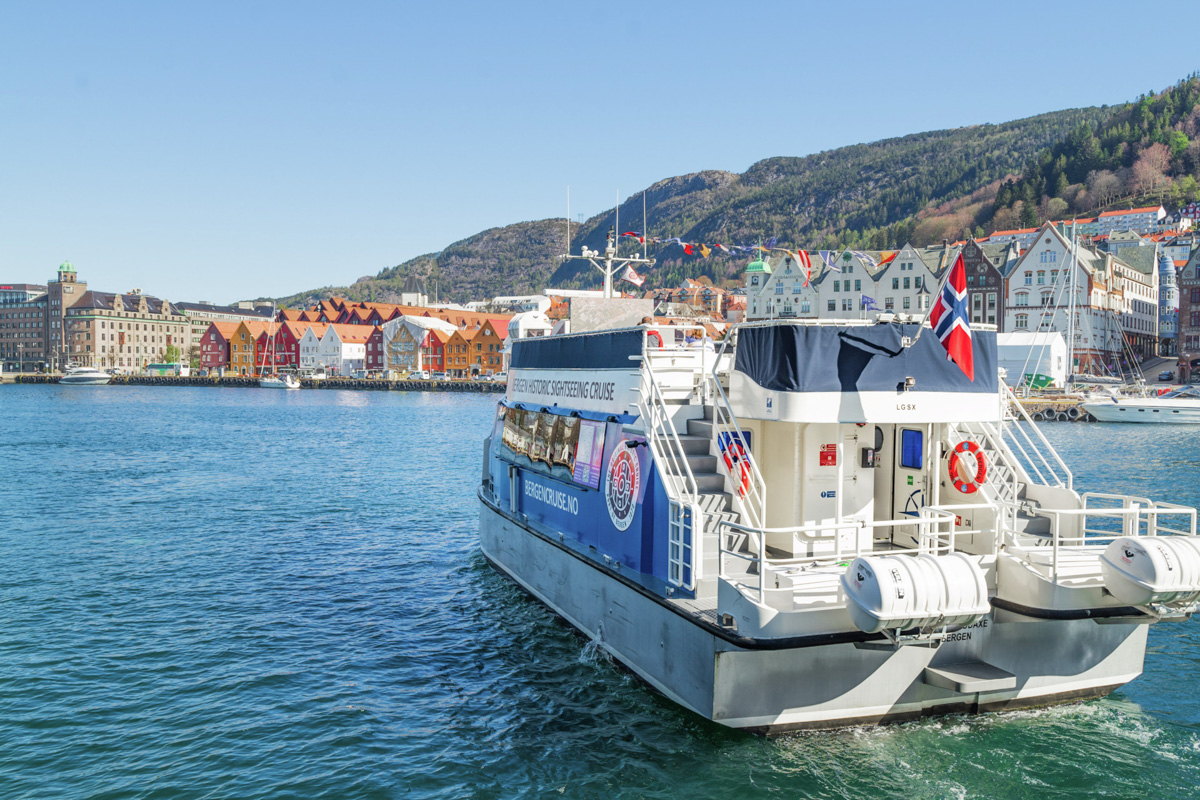
But you came here to see the fjords, and the fjords you will see! Boat trips leave from right outside the visitor’s centre, taking 3.5 hours and sailing past Bergen’s local fjords.
It’s not quite as immersive an experience as staying in Fjaerland, but if you want an easy-to-reach destination boasting a mix of city life and nature and with something for all ages, Bergen’s just the ticket.
Fjaerland
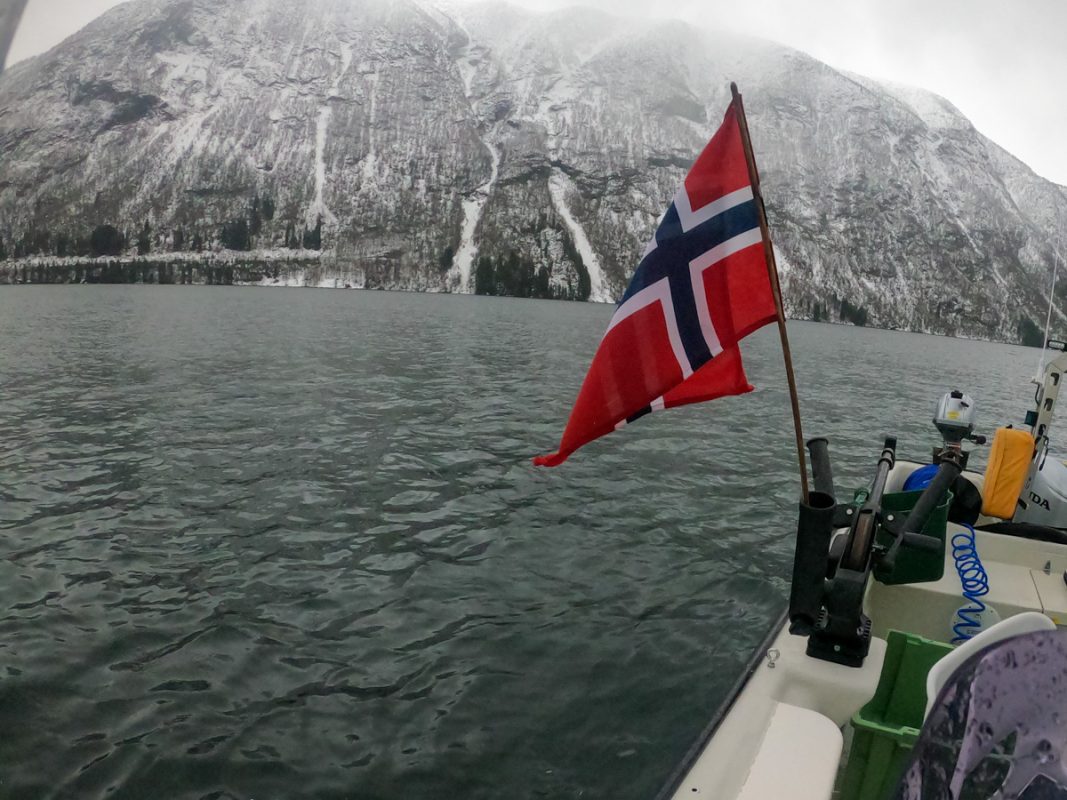
The chalk to Bergen’s cheese, Fjaerland is quiet, secluded and rather tricky to get to.
The best way (considering the Norwegian roads can be exceptionally difficult to navigate in the winter season for anyone who isn’t experienced in driving in these kinds of conditions), is to fly to Sogndal, take a bus to Sogndal city centre and then board another bus to Fjaerland.
Fjaerland’s not one to visit if you’re just on a quick city break – but if you’re on a longer winter trip around Norway and want to see some of its cosiest yet most dramatic locations, this village is one to not miss.
While Fjaerland is tricky to get to, when you’re here you’ll be welcomed like an old friend with exceptional hospitality at the Fjaerland Fjordstove Hotel and a range of activities organised by Fjaerland Guiding.
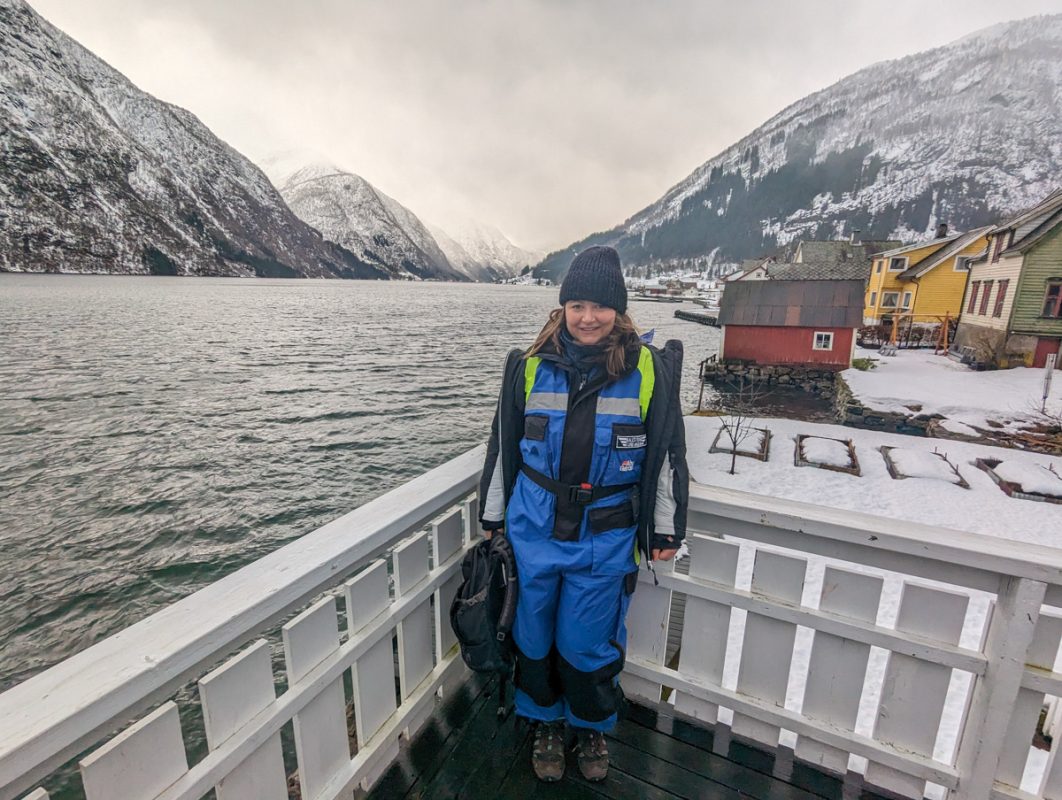
Immerse yourself in the fjord’s natural scenery by taking a fishing trip (we went in rough, snowy weather – remember there’s no such thing as bad weather, only such thing as bad clothing!) or kayak right on the fjord if the weather’s smoother (it’s possible in the winter!).
Fjaerland is down the road from Jostedalsbreen, the largest glacier in mainland Europe, and guided snowshoe tours are available throughout the winter season.
There’s also the impressive Norway Glacier Museum, where you can take a virtual flight over the glacier, educate yourself on its geography and learn about the perils that glaciers all over the world face – and most importantly, what we can do to protect them.

If you’d rather sit and appreciate the views, step into the floating sauna, perhaps cooling down by taking a dip in the near-frozen waters.
You could also warm up in the Fjaerland Fjordstove Hotel, which was built in 1937 and nowadays boasts a range of homely, cosy rooms with fjord views and a large communal area where guests are invited to sit on squashy sofas and watch fjord life go by, and enjoy a steaming hot cup of coffee.
Coffee’s only the beginning of Fjaerland Fjordstove Hotel’s culinary offerings. “We don’t do things by halves,” our host Inna told us as she brought out plates of freshly-made pasta, mine served with a rich, creamy sauce and four different types of mushrooms.
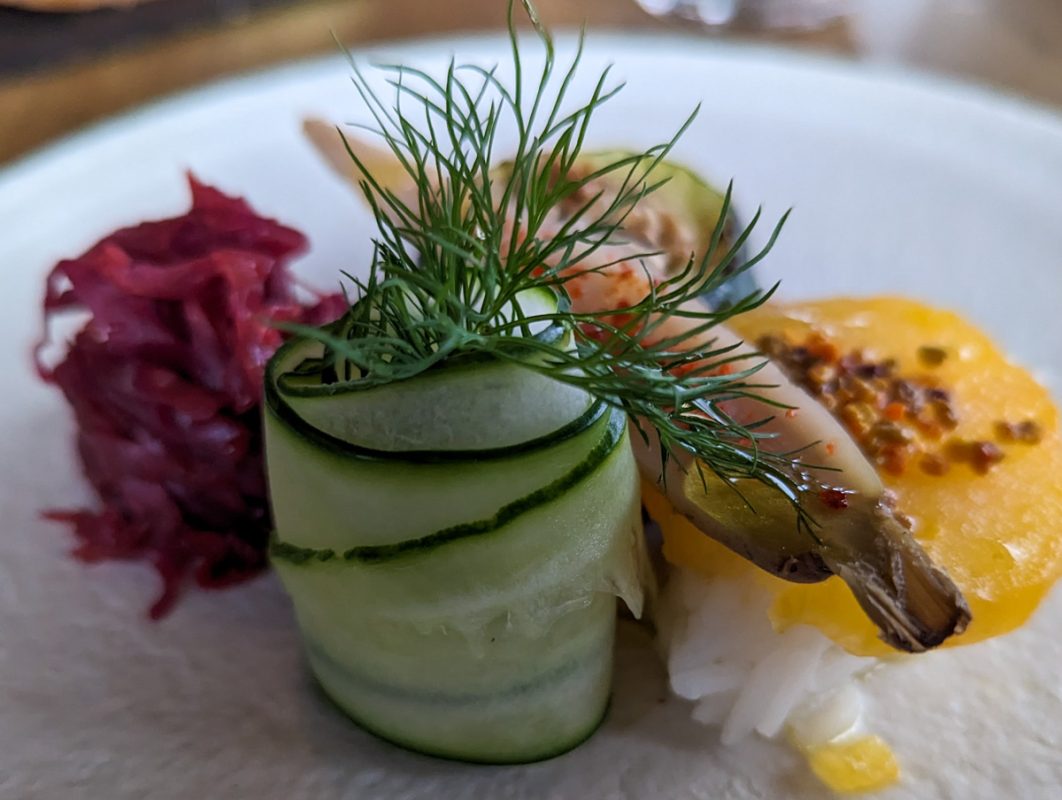

By the time we were eating our light and zesty raspberry cake, topped with lashings of cream, I was considering moving there!
Flåm

“The story of Flåm starts in 1850 with salmon and English lords” Anne, our host from Norway’s Best, described.
What was once a remote, cut-off village quickly drew the attention of tourists, with Frentheim Hotel (Flåm’s most famous) opening first as a manor house and gradually expanding to become a hotel.
This was largely thanks to the Flåm Railway, a lifeline link from Myrdal, a stop on the Bergen – Oslo line, down to the village.
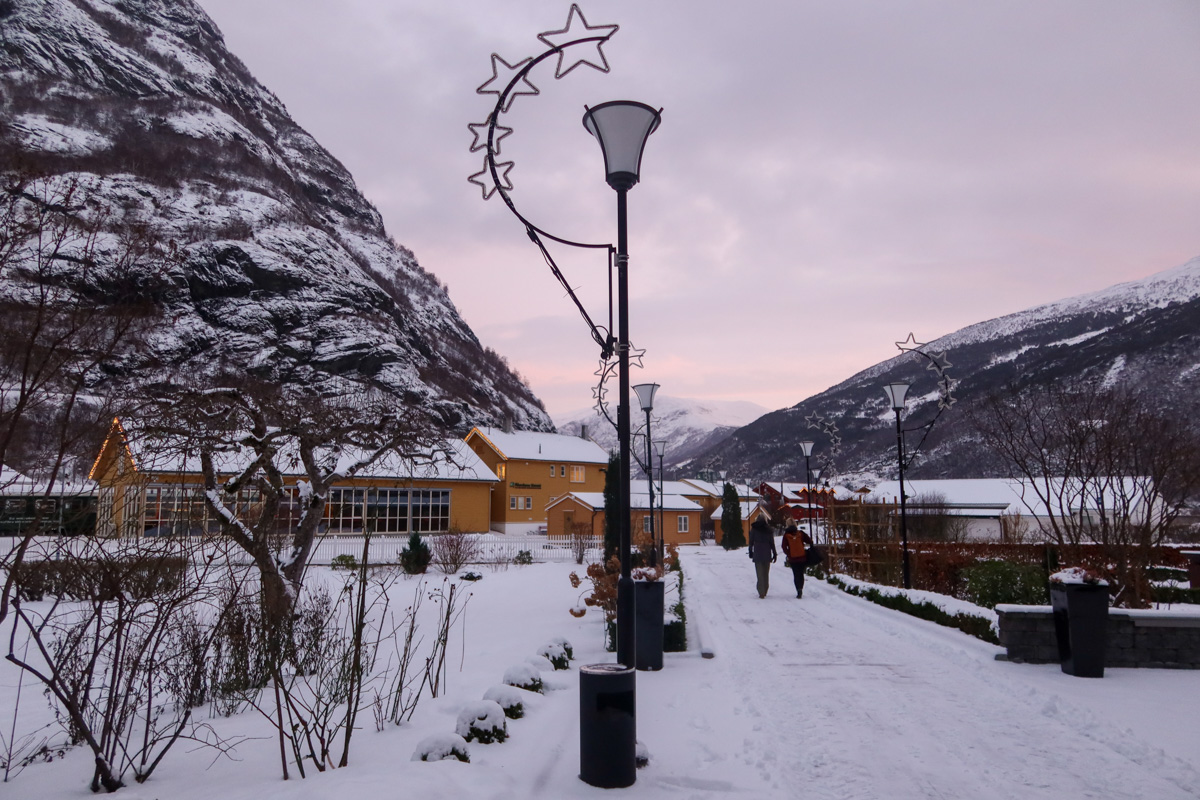
While the railway started for logistical purposes, it quickly rose to fame as one of the world’s most beautiful railway journeys.
Flåm is also close to some of the deepest and largest fjords in Norway.
See these from above by partaking in a snowshoeing tour with Fjord Safari; the guide will take you into the mountains, to the epic Stegastein viewpoint. If you don’t want to walk the whole way down, there’s a quicker way – sledging!
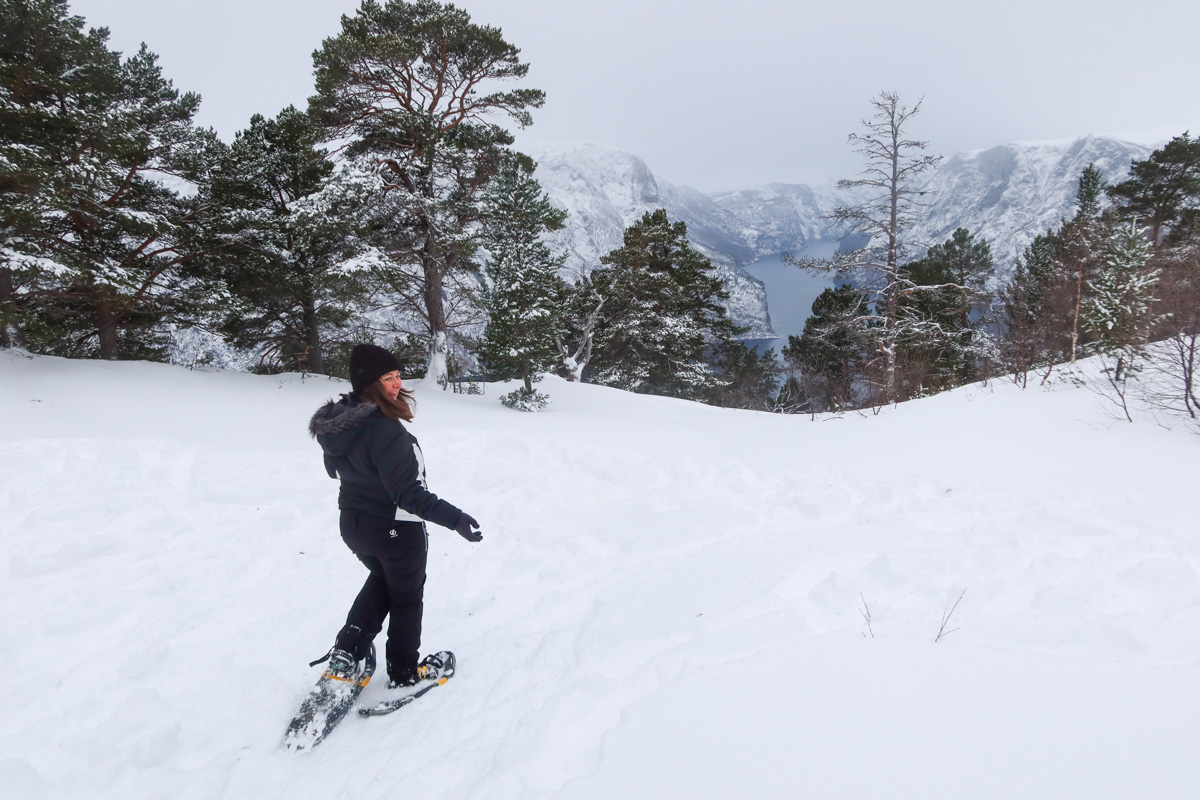
You’ll find a range of fjord-based winter activities in Flåm as well.
All-day trips depart from the village on large electric boats with a warm indoor area – which could be preferable in freezing winter weather.
We opted for the more intrepid option, a RIB safari, which enabled us to get closer to the cliff edges (useful as visibility wasn’t great while we were in town); but the howling wind did get a little too bracing after three hours, even with over five layers of clothing on!
If you’re prone to cold, the electric boat is probably the better option – but if you think you can deal with a few hours of being in the great outdoors in sub-Arctic conditions, a RIB tour might be an adrenaline-boosting adventure.
Whatever your activity of choice, rest your head at Fretheim Hotel, which boasts a fine-dining restaurant serving delectable vegetarian, fish and meat courses; I had a beetroot salad, multi-layered vegetable terrine and a decadent white chocolate mousse.

Rooms at Fretheim are the perfect antidote to warm up from the cold, with comfortable beds, period furniture, heating control and roll-top baths.
Flåm’s the perfect mix between an immersive fjord experience and being relatively easy to access, thanks to its rail connections to Bergen and Oslo.
In the summer, cruises and daytrippers frequent the city in their hordes, but in the winter months, Flåm remains a well-kept secret.
Trondheim
Trondheim’s landmarked by Trondheimsfjorden, which is the third-largest fjord in Norway. Like other destinations around Norway, the landscape comes alive in Trondheim with a blanket of snow and a dramatic backdrop of ice.
The temperatures may be freezing, but the open sea fjords are ideal for cruising and sightseeing. In the surrounding countryside, you can enjoy snowmobiling, snowshoeing and skiing; Bymarka has more than 100 kilometers of cross-country skiing trails.
If the weather’s not on your side when you’re in Trondheim, the city encompasses several indoor attractions, such as the Norwegian University of Science and Technology Museum and the Trondheim Art Museum.
It’s also famous for the Nidaros Cathedral; an ancient church with a rich history.
Dating back to the 11th century, it’s a must-see attraction and is beautifully illuminated at night. Inside, you can marvel at the Crown Regalia.
Sogndal
Sogndal’s stunning fjords are surrounded by snow-capped mountains and frozen waterfalls.
In winter, the fjords are peaceful and quiet, with only the sound of the wind and occasional cracking of ice breaking the silence.
The snow and ice create a stunning contrast against the dark waters of the fjords, making it a photographer’s paradise.
Visitors to Sogndal can go on a fjord cruise or kayak to witness the beauty of the landscape from the water.
Or, try your luck at cross-country skiing or snowshoeing to explore the fjords and the surrounding mountains.
Tromsø

Northern lights tours, Sami culture, Arctic voyages…. Tromsø in winter is famous for a multitude of reasons, and fjords are often left off the list.
While Tromsø doesn’t sit amongst fjords itself, there are some nearby; and, like most other fjords in Norway, these are visitable throughout the year.
You’ll want to don some waterproof, thermal gear – you’re in the Arctic, after all – but Northern Yachting offers cruises ploughing into the fjords, with a commentary about the city and its surrounding nature as you go.
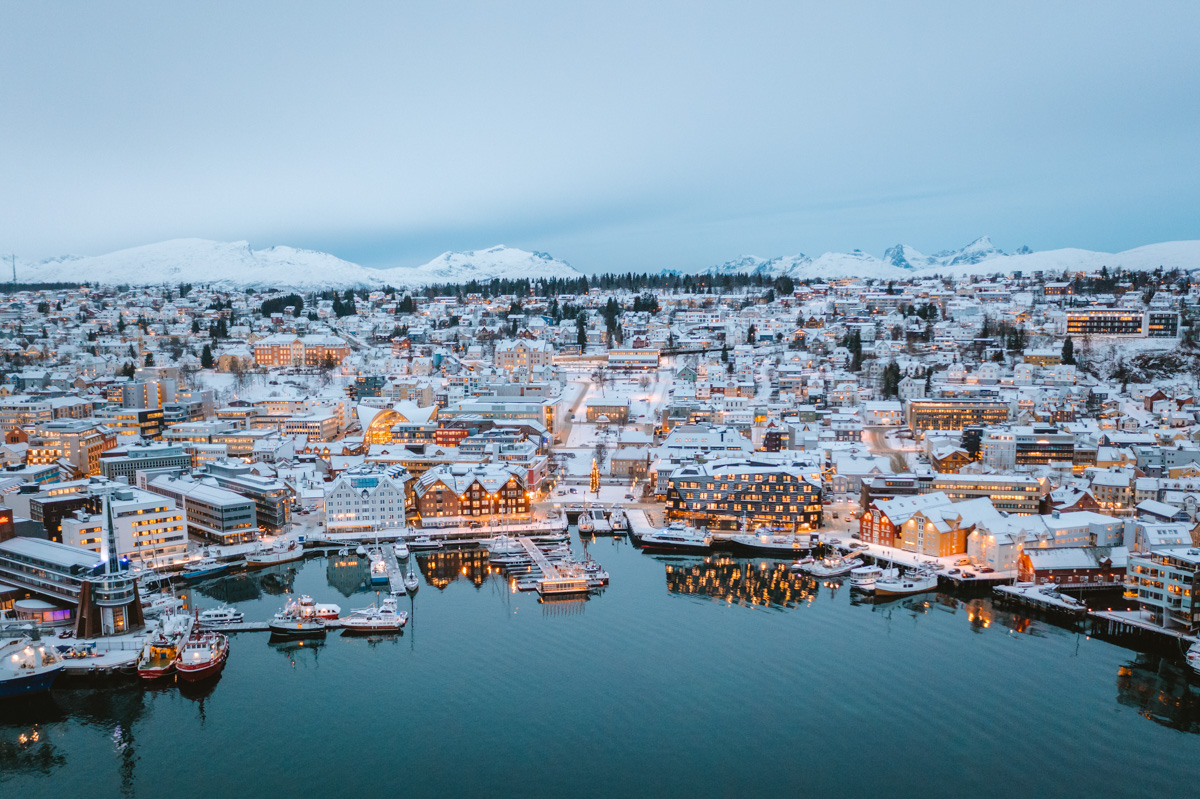
The fjord destinations further south are probably more immersive, but Tromsø’s bursting with fun activities to try in the winter season – so if you’re looking for somewhere where you can enjoy all of Norway’s main winter draws (skiing, northern lights, reindeer, koselig culture) AND see some fjords, Tromsø delivers.
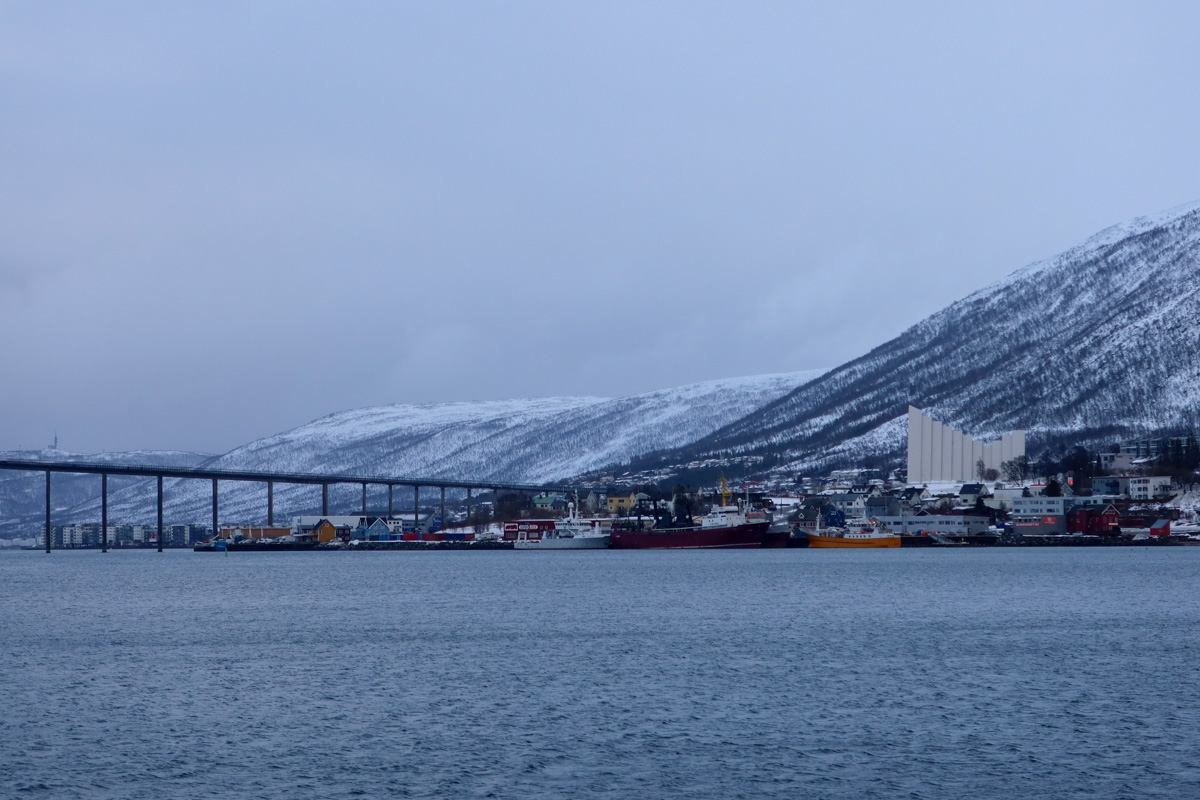
If one of your main reasons for visiting Tromsø is to see the rugged fjords, I’d recommend avoiding the polar night season; this is when the sun doesn’t really rise, meaning that the fjords will be in near total darkness. For a good mix of dark nights and some light in the day, try Tromsø in February.
The most budget-friendly way to visit Tromsø is to fly into Bergen or Oslo and transfer to Tromsø airport (we flew from Bergen). There are direct flights to the Arctic city from European destinations, but they’re pricey!
Things to do on the Norway fjords in winter
Jump into the snow at ski resorts and warm up in saunas. Head out on fishing trips and dine on freshly-caught seafood for lunch. Unleash your inner adventurer by taking a boat tour and then relax with a glass of wine at a homely hotel bar. Here are the best things to do on the Norwegian fjords in winter.
Sightseeing
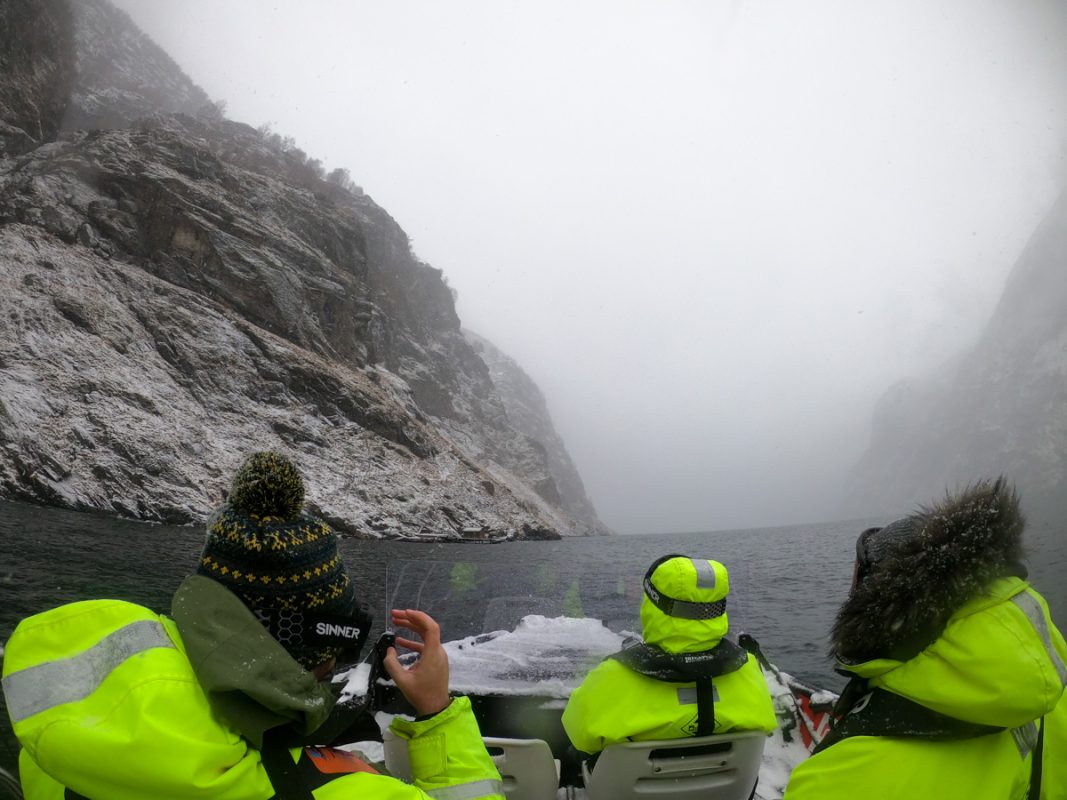
There are few places quite as scenic as the Norwegian fjords, both in winter and summer.
So, obviously, one of the best things to do in the area is to see the stunning fjords themselves!
Sightseeing means something different for everyone, depending on your unique interests and abilities. It might mean layering up and sitting on the side of a fjord, hot chocolate in hand, or taking a boat tour to see the glacial rock formations up close.
With hotels in some of the most beautiful destinations in Norway, you won’t need to worry too much about factoring sightseeing into your winter itinerary – you’ll encounter breathtaking natural beauty every time you look out of a window.
Fishing
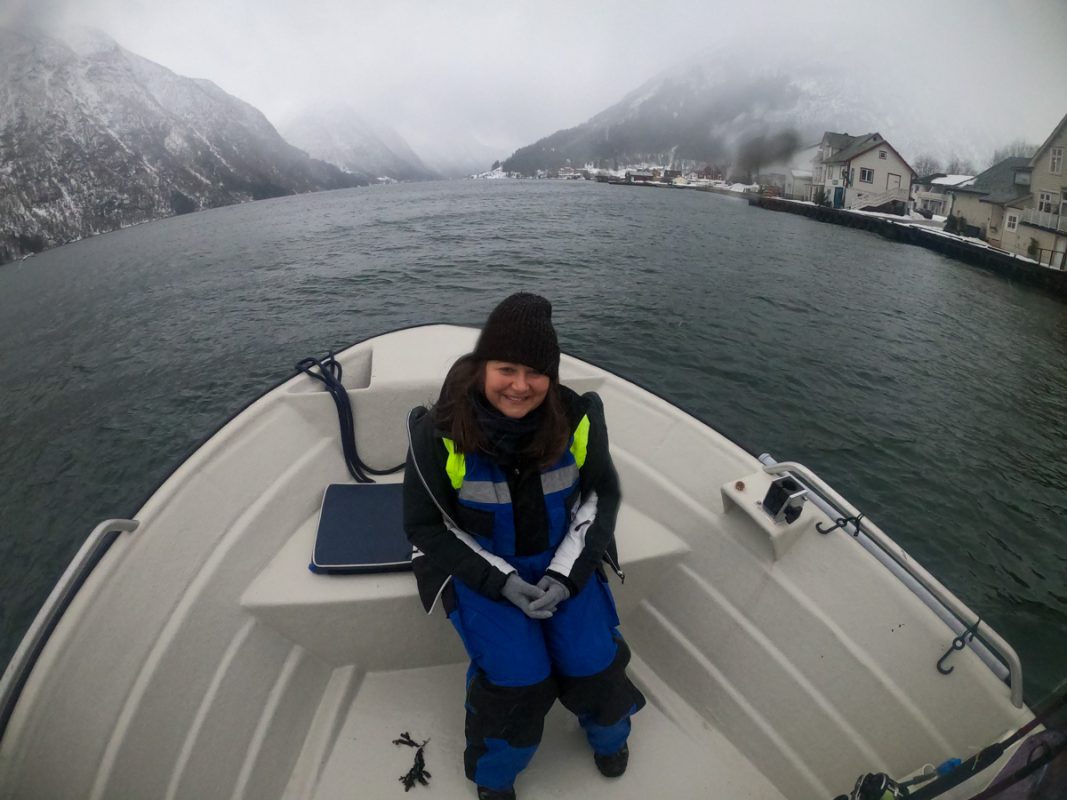
Norway’s cod is something to shout about; the nation of Portugal, some 1,600 miles (2,600 kilometres) to the south, is obsessed with the stuff!
But it’s not just cod that you’ll find in the waters.
Fish for salmon, catch a gunard or look for crayfish on a fishing trip. Or, if you prefer your seafood already sauteed and served, ask for local specials in any restaurant.
Don’t worry if you don’t eat fish – I’m actually vegetarian (and am going off my partner’s and other travel mates’ word on how delectable the seafood was!), and I dined on fresh vegetables cooked in a variety of creative ways, crusty bread, deliciously doughy pasta and sweet and creamy desserts.
Kayaking
While Norway’s fjord landscape entirely alters in the winter months, some things never change – you’ll nearly always find someone tackling the fjord waters, even on the coldest of days!
We were invited on a kayaking trip in Fjaerland, and while I was enticed, the unruly waters when we were there meant that it was a no-go – at least for a bunch of novices.
“You’re unlucky though”, we were told by virtually everyone we met in the village. “The weather’s not usually this wild!”.
Floating saunas

The tumultuous waters also meant that floating saunas were off the cards for our Norwegian fjords trip – but luckily, Jarle, the owner of Fjaerland Guiding, had a land-based alternative for us to try.
“You’re welcome to take a dip in the water too”, he told us. “It might not be as easy as in the floating sauna, though”.
The floating sauna bobs on the water’s surface, with a platform outside and a ladder descending into the chilly depths below.
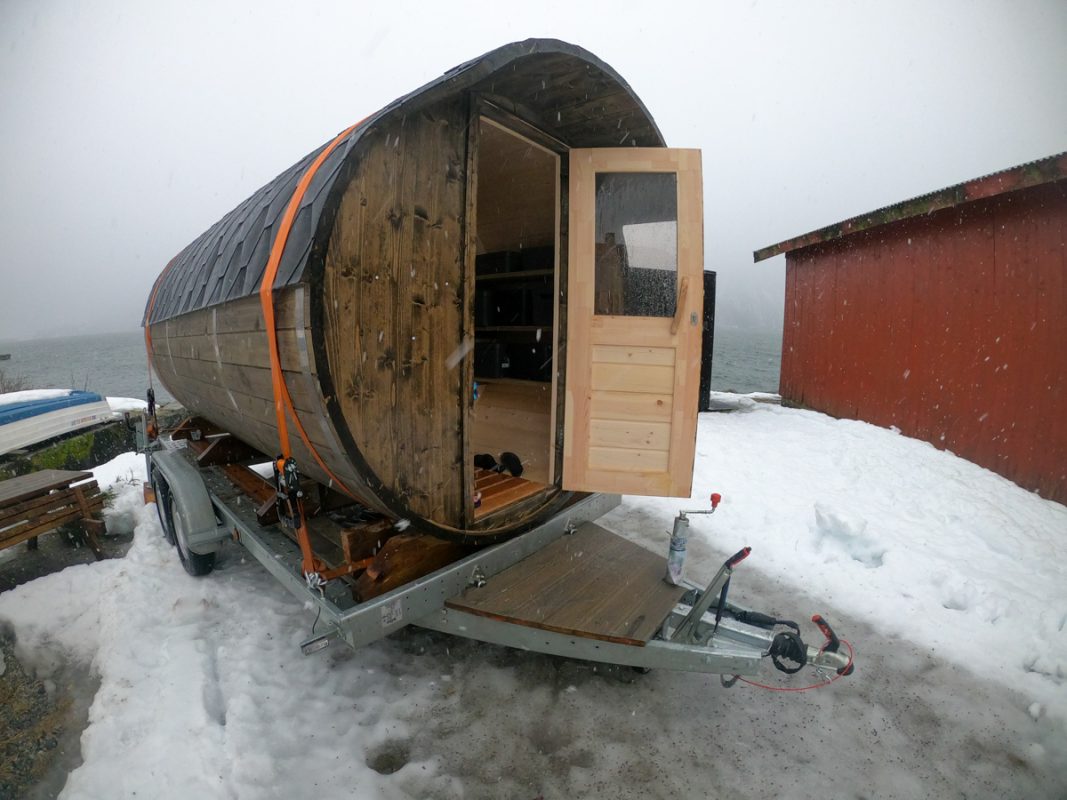
After a stint in the land-based alternative, watching the floating sauna sway on the waves, I stepped out and gingerly stepped toward the water’s edge, feeling the bite of the cold air on my skin.
Unfortunately, the land-based sauna was just a little too far from the water, giving my body the chance to cool down considerably and beg for another stint in 65°C+ temperatures before I reached the water’s edge.
But if I’d been in the floating sauna, I’d have definitely gone in, I told myself.
Snowshoeing
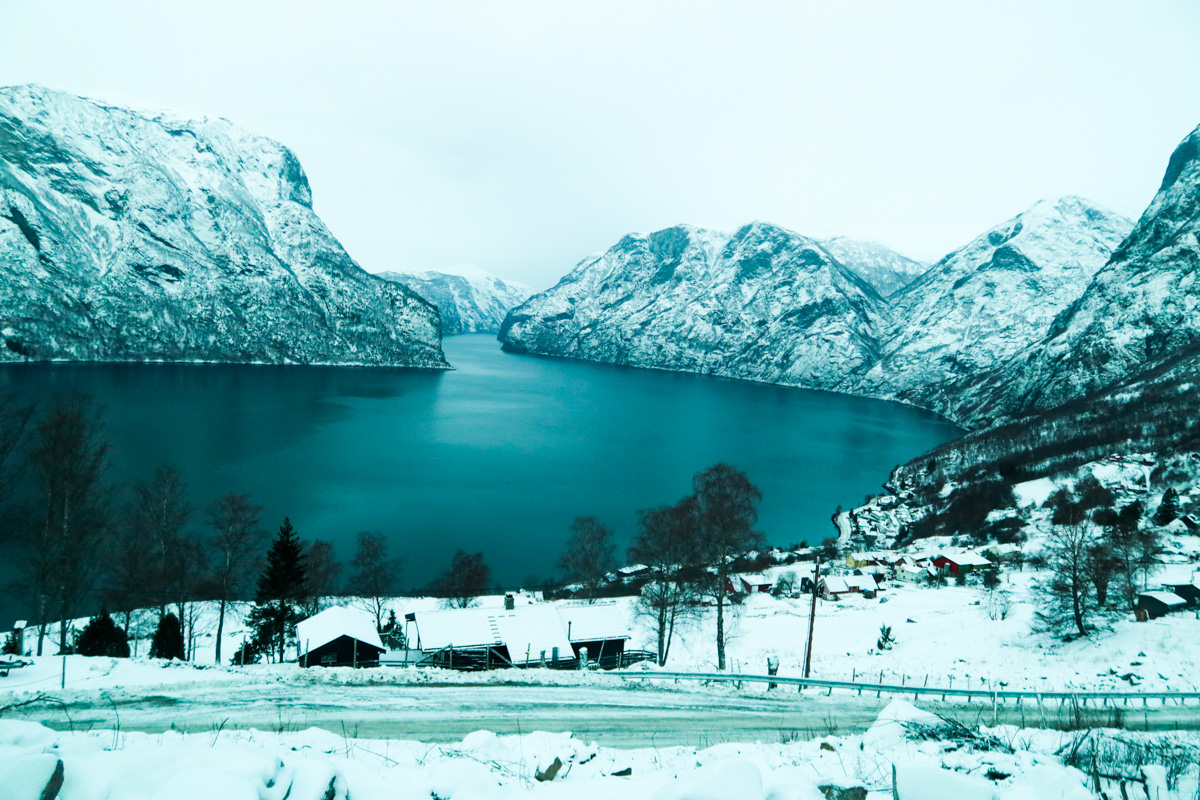
Our feet crunched in the snow as we stepped, one foot in front of the other, up the mountain. With snowshoes, our feet stayed gripped onto icy terrain and ensured that we didn’t fall into the waist-height levels of snow.
We hiked to the epic Stegastein Viewpoint close to Flåm, the ideal place to see the fjords in their entirety, visualising how they were made by glaciers retreating, carving the landscape as they leave a comparative ribbon of water in their wake.
The tour starts and leaves from Flåm, bypassing some of the nearby villages before starting a climb up the mountains.

Involving just one hour and 30 minutes of hiking, with a stop for Norway’s famous hot blackcurrant drink, it’s a fantastic way to explore the snowscapes without getting too cold.
Stay in cosy hotels
Denmark may have hygge, but Norway has koselig; a concept surrounding cosiness in the cold and dark winter months.
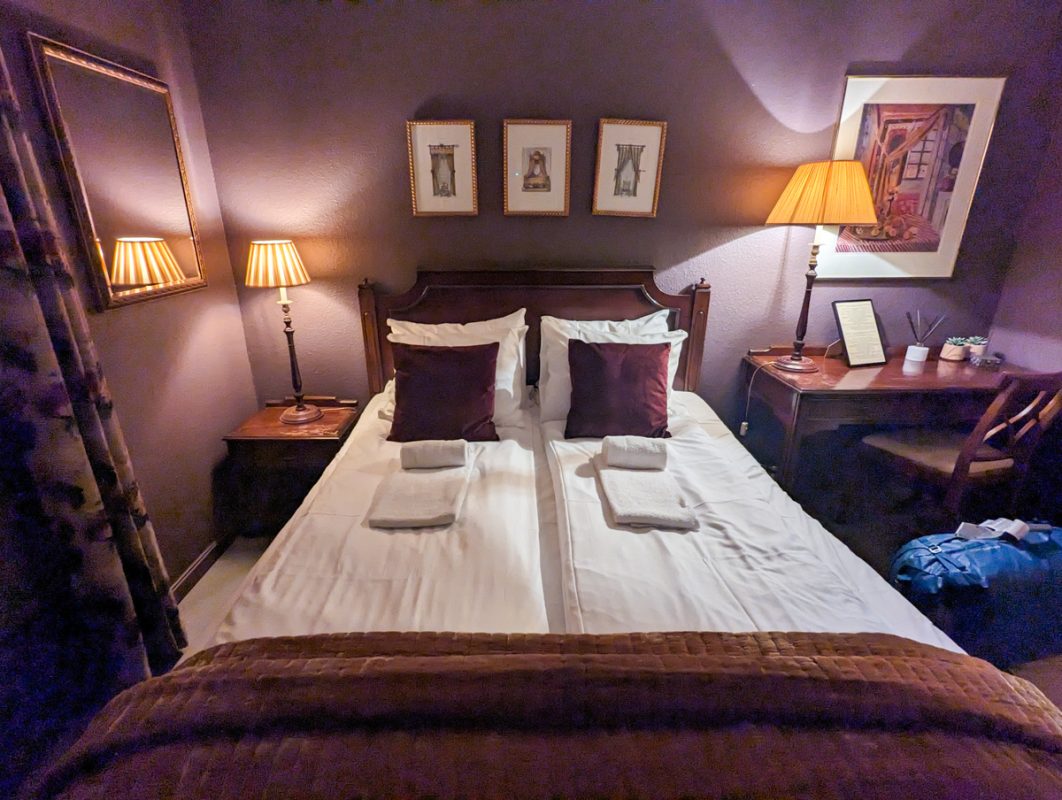
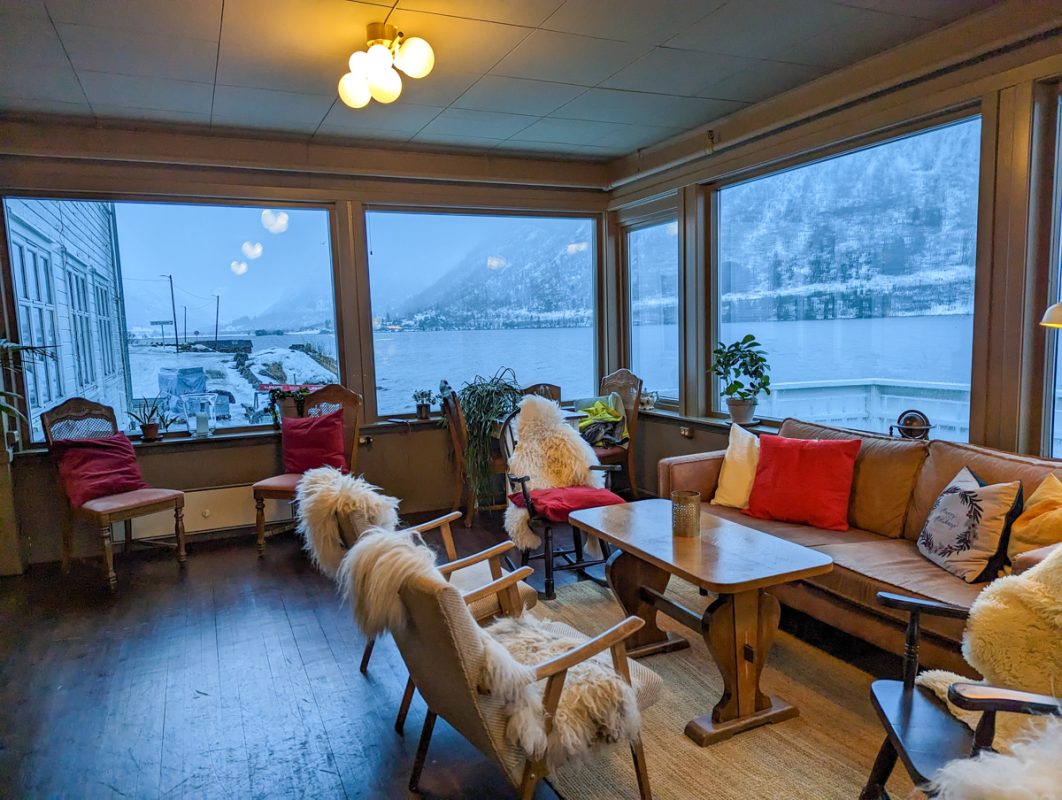
As we walked into Fjaerland Fjordstove Hotel, past bookshelves groaning with literature and toward a table accommodating eight slices of raspberry cake, with a candlelit view of the darkening fjords out the window, I finally started to understand this concept.
Fretheim Hotel is larger than the intimate Fjaerland Fjordstove, but its floor-to-ceiling windows and atmospheric bar offer guests the chance to witness fjord scenery while remaining toasty.
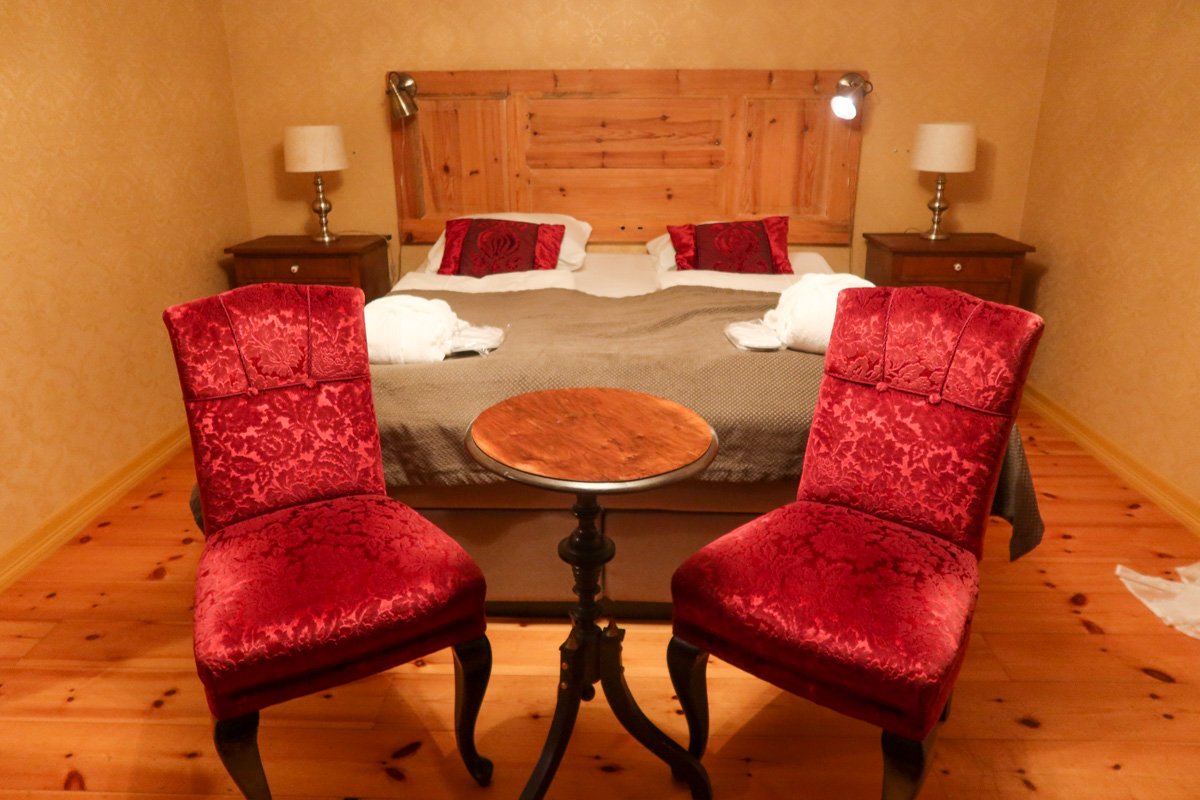

These cosy hotels, restaurants and bars are dotted throughout fjord Norway (and indeed, the entire country), and offer the ideal bases for winter trips to the country.
Norway fjords in winter FAQs
Can you visit the fjords in Norway in winter?
Yes, it’s certainly possible to visit the Norwegian fjords in winter! The fjords are covered with snow, with the mountains providing breathtaking backdrops.
It’s a unique and magical experience and fewer tourists offer an opportunity to enjoy the beauty of the fjords in a peaceful setting.
What is the best time of year to visit the Norwegian fjords?
The best time to visit the Norwegian fjords is usually thought to be from May to September when the weather is pleasant and the days are long.
However, the gorgeous snowy landscapes of the dramatic fjords, plus opportunities for winter sports makes them an ideal place to visit in winter too!
Are fjords frozen in winter?
Some parts of the fjords can freeze in winter, depending on the location and temperature. However, the main fjords are usually navigable throughout the year, so you can explore the waters by boat even in the coldest months!
How cold are the Norwegian fjords?
The temperature in the Norwegian fjords – and in the entire Nordic region – varies depending on the location and season. In winter, it can drop below freezing, with average temperatures ranging from -3°C to 5°C.
Can you cruise the fjords in winter?
Fjord cruises are available throughout the winter months, and there are usually fewer crowds; although some cruises don’t run in the winter season. However, cruising the fjords is a unique experience that offers a different perspective on the fjords, with snow-capped mountains and frozen waterfalls providing a magical backdrop to the cruise.
Are the Norwegian fjords worth seeing?
The fjords are among the best places to visit in Norway, offering stunning views of dramatic landscapes that are unlike anywhere else in the world. The fjords provide a unique cultural heritage, with traditional fishing villages and scenic hiking trails. It is a must-visit destination for anyone seeking adventure, natural beauty, and a once-in-a-lifetime experience.
Can you see the northern lights from the fjords in Norway?
The northern lights, which are solar activity in the earth’s atmosphere, are sometimes visible from the Norwegian fjords; however, it largely depends on how far north you are.
There’s a chance of seeing the northern lights in the Norwegian winter night sky wherever you are in the country, but it’s much more likely that you’ll see them in Tromsø.
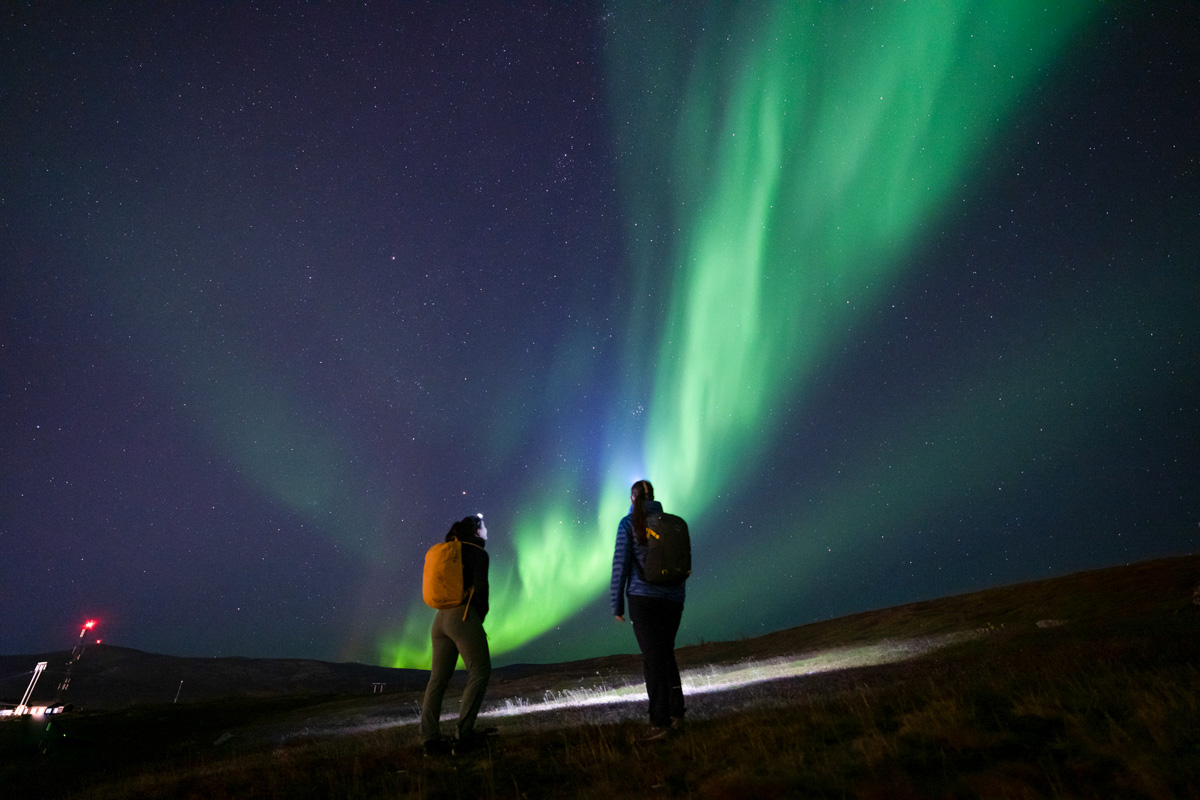
Are you ready to visit the Norwegian fjords in winter?
Don’t let cold weather and shorter days put you off the Norwegian fjords in December, January or February! Whether you fancy cross-country skiing through fluffy snow or exploring the Arctic region you’ll have an incredible winter adventure in this part of the world.
Norway comes alive in the colder months, and if you’re searching for somewhere to embrace winter, then head to this Scandinavian nation!

